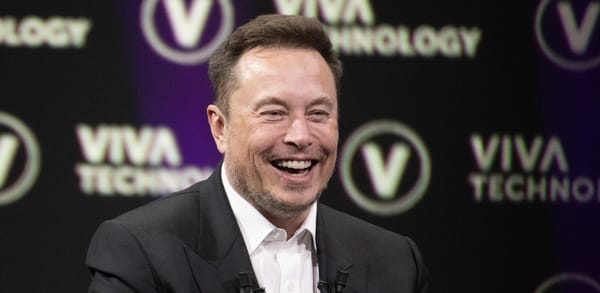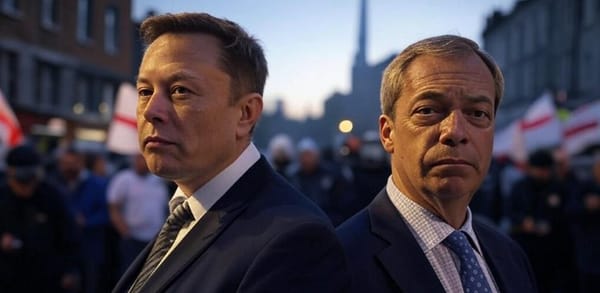Schools are stuck in 2020 too.
It’s a new year. But it somehow still feels like 2020 too. We know so much more about COVID yet we are still having the same conversations we had in 2020, Stephanie Salgado writes.

It’s a new year. But it somehow still feels like 2020 too. We know so much more about COVID yet we are still having the same conversations we had in 2020, Stephanie Salgado writes.
First published: January 2022.
On the weekend, the news broke about masks in secondary schools. Unless one of your new year’s resolutions was swearing off social media, it was hard to miss the various trending hashtags, comments likening mask-wearing to child abuse, and various experts and conspiracy theorists weighing in. Phew — busy day on social media.
But how are we back here?
Lockdown or not. Schools open or not. Masks or not. Vaccinate or not.
Why are we still debating harmful extremes when we now know so much more? There are many calls for normalcy – “getting back to normal because COVID isn’t going away” – but very few of us have adapted and understood what this new normal means.
For example, let’s look at primary schools. In a few days (or less) my family have to make an awful decision.
- Option 1:
Send our children back to school. Where it is guaranteed that they will catch COVID with unknown outcomes.
- Option 2:
Keep them at home. Where we are not guaranteed support, we will possibly receive a fine and it is entirely uncertain that we can manage all the demands of work and life while trying to juggle home-schooling our children without a cost to their education or social development.
Are these really the best and only options we can offer our children?
Just before schools closed for the Christmas holidays I read a piece written by Molly Kingsley, founder of UsForThem. She writes, “It would be a moral crime to shut schools again. Boris will face a political earthquake if he dares attempt it.” On their ‘About Us’ page, UsForThem claim that they care about children and that they need to be prioritised. But isn’t it a moral crime to not protect children from a new virus we’re still learning about whose long term effects remain unknown and that keeps mutating every few months?
I am not sure if Ms Kingsley understands what a moral crime is – but I don’t think it is in society’s best interests to have norms or moral codes that make people ill when better options exist. UsForThem were among those who have been busy condemning the mask mandates for secondary schools. But as far as I can tell from their website and Twitter page, their solution stops at keeping schools open and applauding anyone refusing to wear a mask.
I also read Education Secretary Nadhim Zahawi’s open letter to school leaders and staff today. It was a nice letter indicating his appreciation of all the hard work teachers and school leaders alike have put in to keep schools open. But it was also an empty letter, with no indication of how the UK plans to mitigate the situation. In fact, there was no mention of primary schools or early years at all.
Why does the UK government think it is okay to repeatedly expose young children this way?
“Why does the UK government think it is okay to repeatedly expose young children this way?”
COVID has already caused about 150,000 deaths in the UK alone. Indeed, data from the ONS suggests that COVID was the leading cause of death in 2020 in England and Wales.
It doesn’t have to be this way.
As a society, our accepted rules should include protecting our young. There are safeguarding measures in place in schools to “promote the welfare of children and protect them from harm”.
Safeguarding, the NSPCC website goes on to say, means:
- protecting children from abuse and maltreatment;
- preventing harm to children’s health or development;
- ensuring children grow up with the provision of safe and effective care;
- taking action to enable all children and young people to have the best outcomes.
How then can we in good conscience send children back to school to an environment that is riddled with COVID?
There are already signs of increased diabetes presenting in children who have caught COVID. The number of cases of multisystem inflammatory syndrome in children or MIS-C for short was at 100 per week back in Feb 2021 after the Beta variant. What numbers will we see in a couple of months after we have allowed the Delta and Omicron variants to spread rampantly through our schools? Back in November the BBC reported that cases were highest among the 5-9-year olds. The short term outlook is not enough to comfort.
What effects will we see on our children’s future health and wellbeing?
As the number of children hospitalized for (not just with) COVID rises, it is worth remembering that many viral illnesses create all kinds of long-term conditions and illnesses, long lasting fatigue, dietary issues, behavioural issues, mental health, organ damage and so on. Death is not the only thing to worry about and for whatever reason, it’s harder to find the top causes of death in UK children, but it’s worth noting this Science magazine article: “Almost 700 children have died from COVID-19, placing SARS-CoV-2 infection among the top 10 causes of death in US children.”
We vaccinate our kids against many viral illnesses. Why then are we hesitating for COVID? But the topic of vaccines is hotly debated for primary school children so I don’t want to cloud this piece by discussing the pros and cons of vaccines for children.
My main purpose is to ask the government, school unions, campaign groups like UsForThem, local councils, school leaders, teachers, and parents — What are you doing to make schools a safer space? Because there are options and solutions we can use to make schools safer that many other countries and many UK private schools have already adopted. But what about State Schools? What about the schools that the majority of Britain’s future go? What measures and mitigations do State Schools have in place to prevent this viral illness and others that will inevitably crop up in the future? What choices do parents who have vulnerable children have? At what point do we say enough, we need to protect the kids – all the kids?
“At what point do we say enough, we need to protect the kids – all the kids?”
The answer isn’t a never-ending cycle of lockdowns and school closures each time we get a new variant or the winter months overburden an already beleaguered NHS. The answer is making schools safer. The answer is what ventilation experts like Independent Sage, Cath Noakes, Christina Pagel, and many others here have been calling for all along. Schools are a huge gap in moving to the next stage of the COVID pandemic and there have been many suggestions on how to make them safer.
Schools can be made safer through vaccination and ventilation. Cleaning the air. HEPA filters go a long way towards achieving this, a small study done by an NHS hospital in Addenbrooke found that HEPA filters removed COVID particles from the air. HEPA filters will circulate the air in the room, cleaning it quickly enough so that one case doesn’t infect a whole classroom. This VOX article has a more detailed explanation and this BBC article has some slides that explain what ventilation in a classroom looks like. Fans and open windows help, but only insofar as the air is circulating. HEPA filters ensure that this circulation and cleansing of the air actually happens. It will help keep our kids in classrooms.
The government is in the process of conducting a study in Bradford with results expected later this year, but we already have a lot of data on the use of HEPA filters both in the UK and globally, so why waste more time finding out? The only side effect is fewer illnesses and less pollution in what our kids breathe.
Today’s letter by Nadhim Zahawi said they would make 7,000 more air cleaning units available, which would be great news if there weren’t over 30,000 schools and early education settings with multiple classrooms in the UK. That’s not even one per school. The Department of Education have also launched an online marketplace where schools can purchase DfE approved air purifiers. However, the prices of the listed purifiers are very expensive and schools cannot afford to do this on their own.
How much does that cost?
A recent article in the Guardian reported that the Liberal Democrats had calculated that England could fund a purifier in each classroom for £140m. About half the price of a Royal yacht. The annual budget for education is £104 BILLION. Using £140 million of it to support schools in improving ventilation will reduce the need for schools closures due to staffing shortages and reduce overall absences while improving pupil health and wellbeing in general. Cheaper options that meet the requirements are available.
As parents, teachers, and members of the wider community, we shouldn’t have to choose between closing schools and opening schools. We should shift the conversation to how to make our schools safer. Every child’s health matters. Every child’s education matters.

Written by Stephanie Salgado
— AUTHORS —▫ Parents United, grassroots, parent-led campaign for a sensible, safe, and sustainable approach to UK Schools. |
GET THEM INVOLVED: |
Sources
- Text: This piece was first published in PMP Magazine on 3 December 2022. | The author writes in a personal capacity.
- Cover: Adobe Stock/annebel146.






[Read our Comments Guidelines]